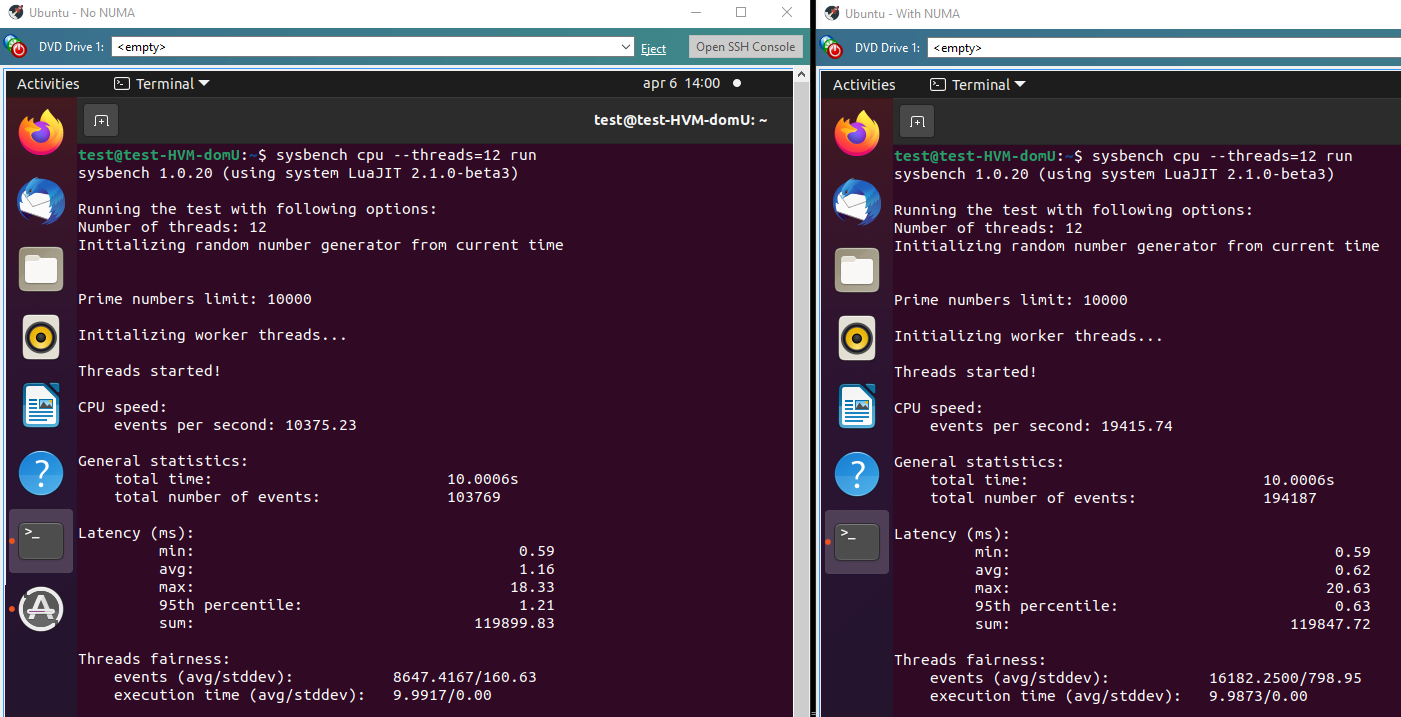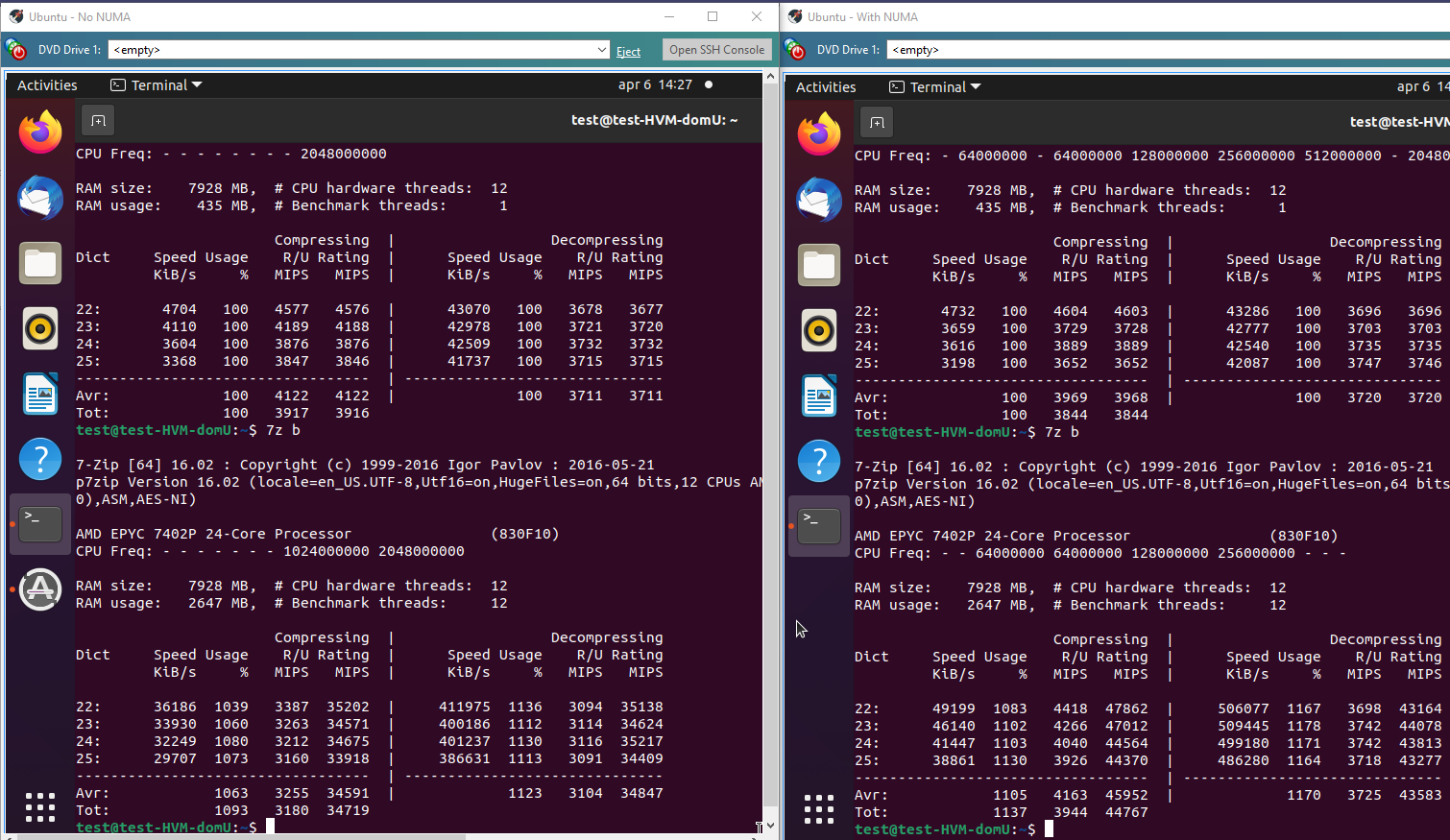@Biggen At the moment, xcp-ng center provides some better views and overviews not yet available in XO.. Hoping next major version fixes this 
Posts
-
RE: [WARNING] XCP-ng Center shows wrong CITRIX updates for XCP-ng Servers - DO NOT APPLY - Fix released
-
RE: Long backup times via NFS to Data Domain from Xen Orchestra
@florent said in Long backup times via NFS to Data Domain from Xen Orchestra:
@MajorP93 this settings exists (not in the ui )
you can create a configuration file named
/etc/xo-server/config.diskConcurrency.tomlif you use a xoacontaining
[backups] diskPerVmConcurrency = 2That is great. Can we get it as a UI option too?

-
RE: XCP-ng Guest Agent - Reported Windows Version for Servers
@olivierlambert said in XCP-ng Guest Agent - Reported Windows Version for Servers:
It's funny to see Microsoft having a version 10 for an edition named 11. I suppose it's not a surprise for an organization that huge.
They did say that Windows 10 would be the last version of Windows...

-
RE: Citrix or XCP-ng drivers for Windows Server 2022
@dinhngtu Thank you. I think it is clear for me now.
The docs at https://xcp-ng.org/docs/guests.html#windows could be improved to cover all three options but also to be a little more concise to make it easier to read.
-
RE: Epyc VM to VM networking slow
Tested the new updates on my prod EPYC 7402P pool with
iperf3. Seems like quite a good uplift
Ubuntu 24.04 VM (6 cores) -> bare metal server (6 cores) over a 2x25Gbit LACP link.
Pre-patch
- iperf3 -P1 : 9.72Gbit/s
- iperf3 -P6 : 14.6GBis/s
Post Patch
- iperf3 -P1 : 11.3GBit/s
- iperf3 -P6 : 24.2GBit/s
Ubuntu 24.04 VM (6 cores) -> Ubuntu 24.04 VM (6 cores) on the same host
Pre Patch
Forgot to test this...
Post Patch
- iperf3 -P1 : 13.7GBit/s
- iperf3 -P6 : 30.8GBit/s
- iperf3 -P24 : 40.4GBit/s
Our servers have
Last-Level Cache (LLC) as NUMA Nodeenabled as most our VMs do not have huge amount of vCPUs assigned. This means for the EPYC 7402P (24c/48t) we have 8 NUMA nodes. We however do not usexl cpupool-numa-split. -
RE: Best CPU performance settings for HP DL325/AMD EPYC servers?
Sorry for spamming the thread.

I have two identical servers (srv01 and srv02) with AMD EPYC 7402P 24 Core CPUs. On srv02 I enabled the
LLC as NUMA Node.I've done some quick benchmarks with
Sysbenchon Ubuntu 20.10 with 12 assigned cores. Command line:sysbench cpu run --threads=12It would seem that in this test the NUMA option is much faster, 194187 events vs 103769 events. Perhaps I am misunderstanding how sysbench works?

With 7-zip the gain is much less, but still meaningful. A little slower in single-threaded performance but quite a bit faster in multi-threaded mode.

-
RE: Host stuck in booting state.
Problem was a stale connection with the NFS server. A reboot of the NFS server fixed the issue.
-
RE: Restoring a downed host ISNT easy
@xcprocks said in Restoring a downed host ISNT easy:
So, we had a host go down (OS drive failure). No big deal right? According to instructions, just reinstall XCP on a new drive, jump over into XOA and do a metadata restore.
Well, not quite.
First during installation, you really really must not select any of the disks to create an SR as you could potentially wipe out an SR.
Second, you have to do the sr-probe and sr-introduce and pbd-create and pbd-plug to get the SRs back.
Third, you then have to use XOA to restore the metadata which according to the directions is pretty simple looking. According to: https://xen-orchestra.com/docs/metadata_backup.html#performing-a-restore
"To restore one, simply click the blue restore arrow, choose a backup date to restore, and click OK:"
But this isn't quite true. When we did it, the restore threw an error:
"message": "no such object d7b6f090-cd68-9dec-2e00-803fc90c3593",
"name": "XoError",Panic mode sets in... It can't find the metadata? We try an earlier backup. Same error. We check the backup NFS share--no its there alright.
After a couple of hours scouring the internet and not finding anything, it dawns on us... The object XOA is looking for is the OLD server not a backup directory. It is looking for the server that died and no longer exists. The problem is, when you install the new server, it gets a new ID. But the restore program is looking for the ID of the dead server.
But how do you tell XOA, to copy the metadata over to the new server? It assumes that you want to restore it over an existing server. It does not provide a drop down list to pick where to deploy it.
In an act of desperation, we copied the backup directory to a new location and named it with the ID number of the newly recreated server. Now XOA could restore the metadata and we were able to recover the VMs in the SRs without issue.
This long story is really just a way to highlight the need for better host backup in three ways:
A) The first idea would be to create better instructions. It ain't nowhere as easy as the documentation says it is and it's easy to mess up the first step so bad that you can wipe out the contents of an SR. The documentation should spell this out.
B) The second idea is to add to the metadata backup something that reads the states of SR to PBD mappings and provides/saves a script to restore them. This would ease a lot of the difficulty in the actual restoring of a failed OS after a new OS can be installed.
C) The third idea is provide a dropdown during the restoration of the metadata that allows the user to target a particular machine for the restore operation instead of blindly assuming you want to restore it over a machine that is dead and gone.
I hope this helps out the next person trying to bring a host back from the dead, and I hope it also helps make XOA a better product.
Thanks for a good description of the restore process.
I was wary of the metadata-backup option. It sounds simple and good to have, but as you said it is in no way a comprehensive restore of a pool.
I'd like to add my own oppinion here. A full pool restore, including network, re-attaching SRs and everything else that is needed to quickly get back up and running. Also a restore pool backup should be available on the boot media. It could look for a NFS/CIFS mount or a USB disk with the backup files on. This would avoid things like issues with bonded networks not working.
-
RE: Remove VUSB as part of job
Might a different solution be to use a USB network bridge instead of direct attached USB? Something like this https://www.seh-technology.com/products/usb-deviceserver/utnserver-pro.html (There are different options available)... We use my-utn-50a with hardware USB keys and it has shown to be very reliable over the years.
-
RE: suggestions for upgrade path XCP-ng 8.2.1 -> XCP-ng 8.3.0
This is what I did.
- Migrated VMs off one host
- Disconnected that host from the pool
- Made a clean install of version 8.3 on that host and made into a new pool.
- Live-migrated grated VMs back to the new pool
- Made clean installs on the remaining hosts
- Joined the remaining hosts to the new pool
-
RE: I/O errors on file restore
I re-checked again but the issue is unfortunately not resolved. It does not happen on all VMs and files, so maybe there is something wrong somehow in the VDI?
-
RE: ZFS for a backup server
Looks like you want disaster recovery option. It creates a ready-to-use VM on a separate XCP-ng server. If your main server fails you can start the vm directly off the second server.
In any case, backups can be restored with XO to any server and storage available in XCP-ng.
-
RE: Need some advice on retention
@rtjdamen you could simply make two backup jobs, one for daily backups and one for monthly backups.
-
RE: All NFS remotes started to timeout during backup but worked fine a few days ago
Since the nfs shares can be mounted on other hosts, I'd guess a fsid/clientid mismatch.
In the share, always specify fsid export option. If you do not use it, the nfs server tries to determine a suitable id from the underlying mounts. It may not always be reliable, for example after an upgrade or other changes. Now, if you combine this with a client that uses
hardmount option and the fsid changes, it will not be possible to recover the mount as the client keeps asking for the old id.Nfs3 uses rpcbind and nfs4 doesn't, though this shouldn't matter if your nfs server supports both protocols. With nfs4 you should not export the same directory twice. That is do not export the root directory /mnt/datavol if /mnt/datavol/dir1 and /mnt/datavol/dir2 are exported.
So to fix this, you can adjust your exports (fsid, nesting) and the nfs mount option (to soft) , reboot the nfs server and client and see if it works.
-
RE: Long backup times via NFS to Data Domain from Xen Orchestra
@MajorP93 aha, yea. Per disk concurrency is important too.
-
Mirror backup: Progress status and ETA
Hi,
I would like to have more progress information for the "Mirror backup" feature. Currently there is no progress other than how many VMs that have been copied so far.
What I would like is:
The total data size to be transferred plus how many VMs/backups that are left in the queue plus an approximate ETA. All this information should be available for XOA since it already knows what already exists in the source Remote.
Additionally I would like the option to cancel a running Mirror backup. The Cancel button is disabled when I try:

There is also no Task for the Mirror job listed the XOA Tasks screen.
I found an earlier question like this, but there was no answer there.
https://xcp-ng.org/forum/topic/11108/incremental-mirror-backup-progress-information-in-xoa -
RE: NVMe SSD not found when installing
@Kennet You need to boot in UEFI mode. And secondly, you must make sure your nvme is using 512e insted of 4kn sector size. You can use nvme-cli command to check sector size.
-
RE: Netdata package is now available in XCP-ng
@andrewm4894 said in Netdata package is now available in XCP-ng:
Qq, what would be the best way for me to try spin up a sort of test or dev XCP-ng env for me to try things out on? Or is there sort of hardware involved such that this might not be so easy. In my mind I'm imagining spinning up a VM lol which probably shows my level of naivety
You can run XCP-ng inside a VM, as long as the hypervisor underneath exposes nested virtualisation. The actual installation of XCP-ng is very easy. Mostly click and run.
-
RE: XCP-NG 9, Dom0 considerations
My wishlist for a new XCP-ng:
- Recent kernel for dom0.
- Guest trim support -> i.e. guest trim translates to shrunk VDI file.
- Better VM console support: Spice and/or RDP support with client USB access, shared clipboard and file transfers. Note, I do not mean remoting into the guest itself, but providing console access via XCP-ng like the current console VM access is with XO and XCP-ng Center.
- Implement VirtIO support: virtio-net, virtio-gpu, virtio-blk/scsi. (There are also serial and socket virtio devices, but i do not personally use these much, but could be important for management of some types if VMs).
- Support multiqueue i guests for net and blk.(would be possible with virtio)
- VirGL support. This is important as an alternative to GPU pass through or SR-IOV. It would in theory support migration too.